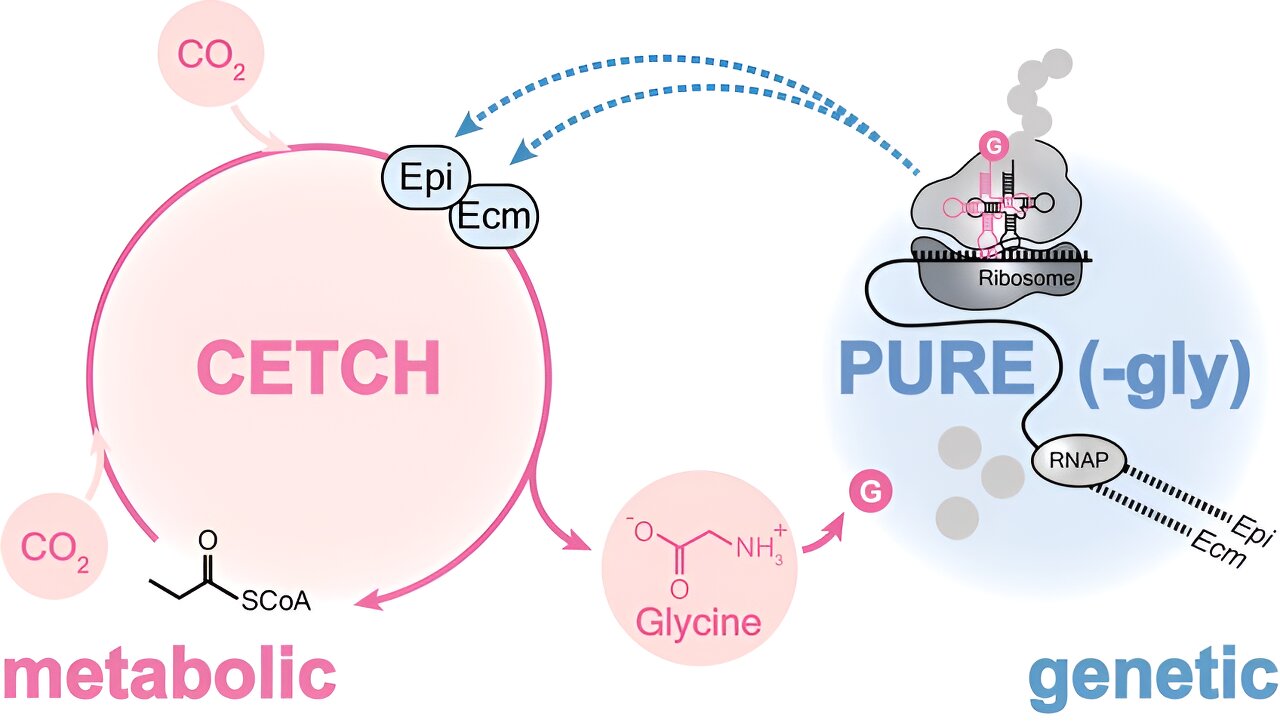Team develops the first cell-free system in which genetic information and metabolism work together
Date: 12.7.2024
By interlinking the metabolic and genetic levels, researchers want to create self-sustaining synthetic biological systems that can generate their own building blocks and drive processes in a reciprocal manner – just like in living cells. A team led by Tobias Erb from the Max Planck Institute for Terrestrial Microbiology in Marburg, Germany, has now made a significant step towards this goal.
 The team has developed the first cell-free system in which a genetic and a metabolic network keep each other running. The system produces metabolic enzymes itself and works both in the test tube and in artificial cell-mimics. It is based on the synthetic Cetch cycle, a metabolic network that uses CO2 as a raw material to produce organic molecules.
The team has developed the first cell-free system in which a genetic and a metabolic network keep each other running. The system produces metabolic enzymes itself and works both in the test tube and in artificial cell-mimics. It is based on the synthetic Cetch cycle, a metabolic network that uses CO2 as a raw material to produce organic molecules.
"We coupled the Cetch cycle with an existing genetic system called Pure, a synthetic transcription and translation machine that works with a mixture of ribosomes, DNA, RNAs, and proteins, outside living cells. We engineered the two levels to work together like an engine. Once started, it keeps going because the two networks feed on each other," explains Simone Giaveri, EMBO fellow and first author of the paper.
To make this work, the researchers made the components dependent on each other. They programmed Pure to produce two of the Cetch enzymes. However, this Pure variant lacks the essential amino acid glycine, which is needed to build proteins. Cetch was modified to produce glycine directly from CO2. As Pure obtains the glycine from Cetch, the cycle is closed.
Image source: MPI f. Terrestrial Microbiology/ Giaveri.























